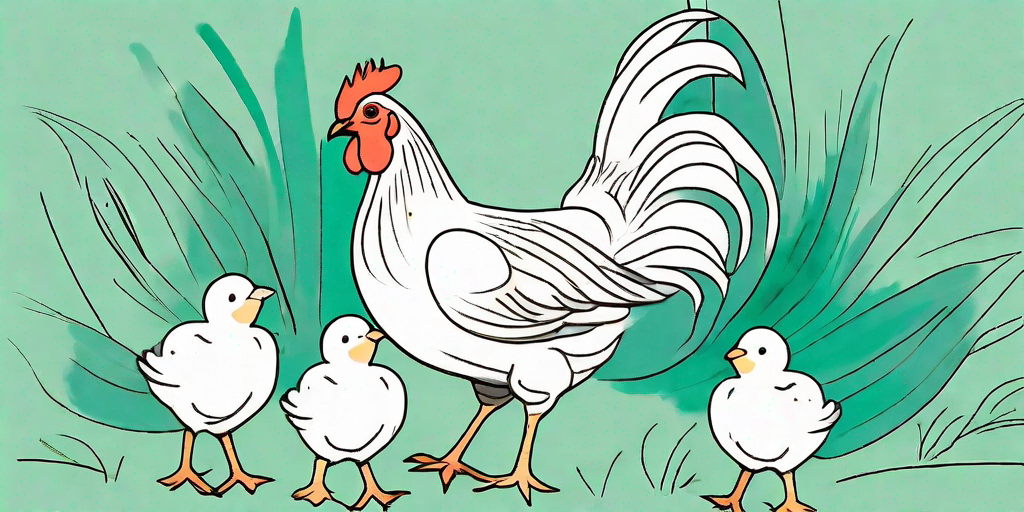
Welcome to the world of hens and chicks, where clucking is the language of love and cuteness is the order of the day. In this fascinating realm, you'll find creatures that are full of surprises, with personalities as diverse as their plumage. So, buckle up, dear reader, as we embark on a journey into the heart of the henhouse.
The Life and Times of a Hen
The Early Days
Our journey begins with the birth of a chick. Emerging from the egg after a 21-day incubation period, these fluffy bundles of joy are a sight to behold. But don't be fooled by their cuteness. These little critters are born survivors, up and running within hours of hatching, ready to take on the world.
Chicks spend their first few weeks under the watchful eye of their mother, learning the ropes of chicken life. They learn to forage for food, avoid predators, and most importantly, master the art of clucking, the chicken's primary means of communication.
The Teenage Years
As the chicks grow, they enter what can only be described as the 'awkward teenage phase'. Their fluffy down is replaced by adult feathers, and they begin to develop the distinctive characteristics of their breed. This is also the time when the pecking order is established, a social hierarchy that will dictate their place in the flock.
For the roosters, this is a time of change. Their crowing becomes more pronounced, and they begin to show interest in the hens. For the hens, it's business as usual, with their days filled with foraging, dust bathing, and the occasional bout of broodiness.
The Adult Life
Once they reach adulthood, hens lead a relatively peaceful life. They spend their days foraging for food, laying eggs, and socializing with their flock. But don't let the calm exterior fool you. Beneath the surface, there's a constant battle for dominance, with the top hen enjoying the best roosting spots and first dibs on food.
Roosters, on the other hand, have a more challenging role. As the protectors of the flock, they're always on high alert, ready to fend off any potential threats. It's a tough job, but someone's got to do it.
The Art of Clucking
Decoding the Clucks
Clucking is the chicken's primary means of communication, and it's a language as complex as any other. From warning calls to food discovery clucks, each sound has a specific meaning. So, the next time you hear a chicken clucking, listen closely. You might just learn something.
For instance, a high-pitched and rapid cluck usually signals excitement or distress, while a low and slow cluck is often a sign of contentment. And then there's the 'egg song', a unique cluck that hens make after laying an egg. It's their way of saying, 'Look what I did!'
Clucking Etiquette
Just like in human society, there are rules when it comes to clucking. Chickens have a clear pecking order, and each bird knows its place. The top hen gets to cluck first, and the others follow suit. Interrupting another chicken's cluck is a big no-no, and can lead to a pecking match.
Roosters also have a role to play in the clucking symphony. They use their crow to signal the start of a new day, and to warn the flock of any potential danger. It's a tough job, but as they say, 'the early bird catches the worm.'
FAQs
Do chickens make good pets?
Chickens can make great pets, provided you have the space and time to care for them. They're social creatures that enjoy company, and they can form strong bonds with their human caretakers. Plus, they provide fresh eggs, which is always a bonus.
How long do chickens live?
The lifespan of a chicken varies depending on the breed and the care they receive. On average, backyard chickens live for 5 to 10 years, but some have been known to live well into their teens.
What do chickens eat?
Chickens are omnivores, which means they eat both plants and animals. Their diet includes grains, fruits, vegetables, insects, and even small rodents. They also need a steady supply of fresh water to stay healthy.
Conclusion
And there you have it, a peek into the fascinating world of hens and chicks. From their early days as fluffy chicks to their adult life in the flock, these creatures are full of surprises. So, the next time you see a chicken, take a moment to appreciate its clucking charm. Who knows, you might just find yourself smitten by their feathered cuteness.
Remember, whether you're a chicken enthusiast or a casual observer, there's always something new to learn in the world of hens and chicks. So, keep clucking, keep learning, and most importantly, keep appreciating these wonderful creatures.















